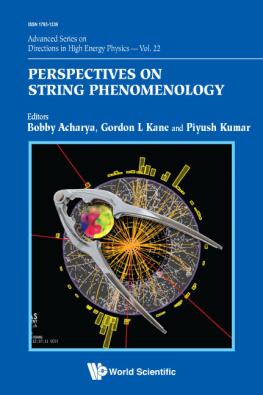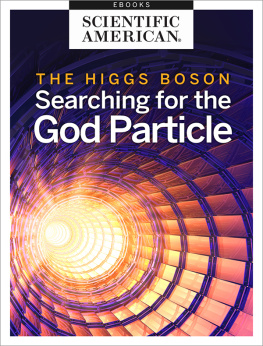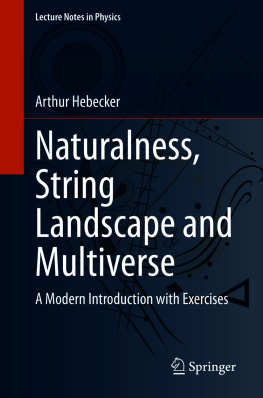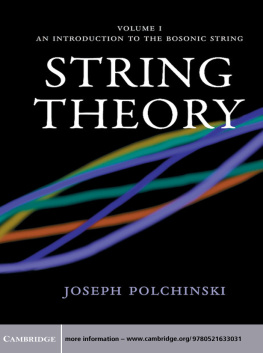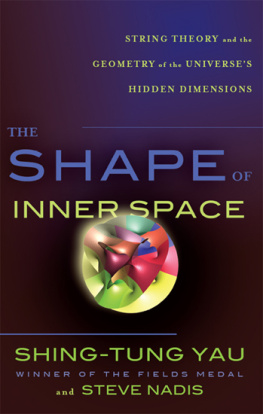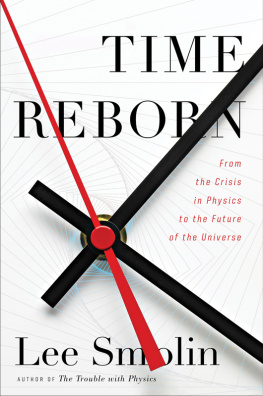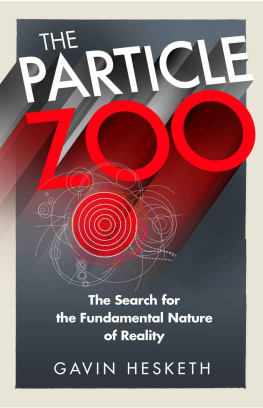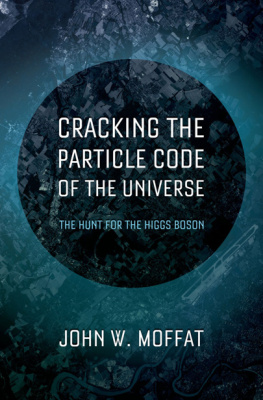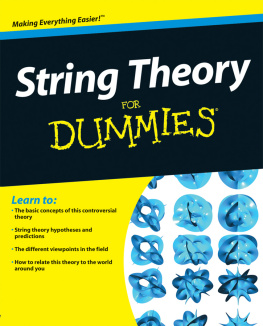Advanced Series on
Directions in High Energy Physics Vol. 22
PERSPECTIVES ON
STRING PHENOMENOLOGY
Editors
Bobby Acharya
Kings College London, UK
Gordon L Kane
University of Michigan, USA
Piyush Kumar
Yale University, USA

ADVANCED SERIES ON DIRECTIONS IN HIGH ENERGY PHYSICS
ISSN: 1793-1339
Published
| Vol. 1 | High Energy ElectronPositron Physics (eds. A. Ali and P. Sding) |
| Vol. 2 | Hadronic Multiparticle Production (ed. P. Carruthers) |
| Vol. 3 | CP Violation (ed. C. Jarlskog) |
| Vol. 4 | ProtonAntiproton Collider Physics (eds. G. Altarelli and L. Di Lella) |
| Vol. 5 | Perturbative QCD (ed. A. Mueller) |
| Vol. 6 | QuarkGluon Plasma (ed. R. C. Hwa) |
| Vol. 7 | Quantum Electrodynamics (ed. T. Kinoshita) |
| Vol. 9 | Instrumentation in High Energy Physics (ed. F. Sauli) |
| Vol. 10 | Heavy Flavours (eds. A. J. Buras and M. Lindner) |
| Vol. 11 | Quantum Fields on the Computer (ed. M. Creutz) |
| Vol. 12 | Advances of Accelerator Physics and Technologies (ed. H. Schopper) |
| Vol. 13 | Perspectives on Higgs Physics (ed. G. L. Kane) |
| Vol. 14 | Precision Tests of the Standard Electroweak Model (ed. P. Langacker) |
| Vol. 15 | Heavy Flavours II (eds. A. J. Buras and M. Lindner) |
| Vol. 16 | Electroweak Symmetry Breaking and New Physics at the TeV Scale (eds. T. L. Barklow, S. Dawson, H. E. Haber and J. L. Siegrist) |
| Vol. 17 | Perspectives on Higgs Physics II (ed. G. L. Kane) |
| Vol. 18 | Perspectives on Supersymmetry (ed. G. L. Kane) |
| Vol. 19 | Linear Collider Physics in the New Millennium (eds. K. Fujii, D. J. Miller and A. Soni) |
| Vol. 20 | Lepton Dipole Moments (eds. B. Lee Roberts and William J. Marciano) |
| Vol. 21 | Perspectives on Supersymmetry II (ed. G. L. Kane) |
| Vol. 22 | Perspectives on String Phenomenology (eds. B. Acharya, G. L. Kane and P. Kumar) |
Forthcoming
| Vol. 23 | 60 Years of CERN Experiments and Discoveries (eds. H. Schopper and L. Di Lella) |
| Vol. 8 | Standard Model, Hadron Phenomenology and Weak Decays on the Lattice (ed. G. Martinelli) |
PERSPECTIVES ON
STRING PHENOMENOLOGY
Published by
World Scientific Publishing Co. Pte. Ltd.
5 Toh Tuck Link, Singapore 596224
USA office: 27 Warren Street, Suite 401-402, Hackensack, NJ 07601
UK office: 57 Shelton Street, Covent Garden, London WC2H 9HE
Library of Congress Cataloging-in-Publication Data
Perspectives on string phenomenology / edited by Bobby Acharya, Kings College London, UK, Gordon Kane, University of Michigan, USA, Piyush Kumar, Yale University, USA.
pages cm. -- (Advanced series on directions in high energy physics ; volume 22)
Includes bibliographical references.
ISBN 978-9814602662
1. String models. I. Acharya, Bobby, editor. II. Kane, G. L., editor. III. Kumar, Piyush, editor.
QC794.6.S85P47 2015
539.7'258--dc23
2014042636
British Library Cataloguing-in-Publication Data
A catalogue record for this book is available from the British Library.
Copyright 2015 by World Scientific Publishing Co. Pte. Ltd.
All rights reserved. This book, or parts thereof, may not be reproduced in any form or by any means, electronic or mechanical, including photocopying, recording or any information storage and retrieval system now known or to be invented, without written permission from the publisher.
For photocopying of material in this volume, please pay a copying fee through the Copyright Clearance Center, Inc., 222 Rosewood Drive, Danvers, MA 01923, USA. In this case permission to photocopy is not required from the publisher.
Printed in Singapore
Preface
Quantum field theory is a very broad, mathematical framework within which one can successfully describe an incredibly large, rich and diverse plethora of physical systems. There are many examples of such systems ranging from the microscopic (e.g. descriptions of elementary particle physics) to the macroscopic (e.g. low temperature superconductors). In fact, one of the most celebrated examples of a quantum field theory the Standard Model of Particle Physics is the most accurate scientific model ever constructed, successfully confronting experimental observations at the level of one part in 100 billion in some cases.
Like quantum field theory, string/M theory is also an extremely broad, mathematical framework which addresses an incredibly rich and diverse plethora of physical systems. However, string/M theory has a distinctive advantage over quantum field theory: string theory consistently unifies elementary particle forces with gravity. For instance, in some solutions of string theory, gravitons and photons are simply different massless states of one and the same quantum string. Quantum field theory, in this sense, seems incomplete; gravity cannot be incorporated into the framework in any obvious way.
String Phenomenology is usually the name given to the branch of string/M theory devoted to addressing questions in elementary particle physics, physics beyond the Standard Model, dark matter and cosmology and was really born in the mid-eighties shortly after Green and Schwarz discovered anomaly cancellation and the existence of unified gauge groups like E8E8.
Why String Phenomenology? The Standard Model of Particle Physics is based upon relativistic wave equations: Maxwells equations, the Dirac equation, the Yang-Mills equations and, now that the Higgs boson has been discovered, the Klein-Gordon equation. A mathematical fact is that all of these equations emerge from string theory in the simple, low energy limit. A bonus is that one also gets Einsteins equations in the same limit! But, you might say, these are very general statements, what about details? Well, one of the most highly cited papers on String Phenomenology was written in the mid-eighties by Candelas, Horowitz, Strominger and Witten. This paper clearly demonstrates that solutions of the low energy limit of the heterotic string theory with three large dimensions of space give rise to a model with non-Abelian gauge symmetry and chiral families of interacting charged fermions. Subsequent work showed that the masses of these fermion families are generically hierarchical. Therefore, the key properties of the Standard Model of Particle Physics clearly emerge from string/M theory in a straightforward fashion.
But, what about the fine details like the electron mass and the W-boson mass? The quick answer to that is that they are a calculation in progress and, in fact, the articles in this volume describe some of the tremendous progress which has been made towards questions like this. In principle, these quantities are calculable in any given solution of string theory, but in practice such calculations are extremely difficult at a precision level and, moreover, such calculations do not seem to provide any conceptual or scientific insights. However, in most other frameworks including quantum field theory, these quantities are not even calculable in principle.

